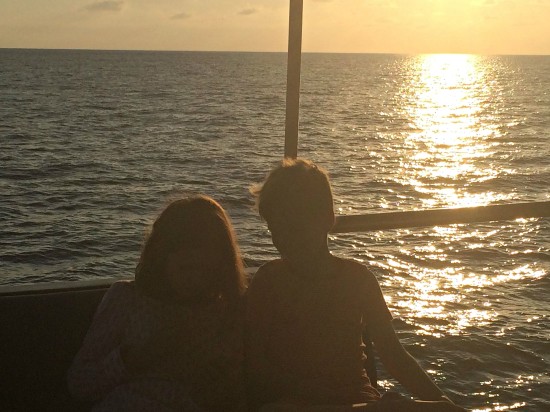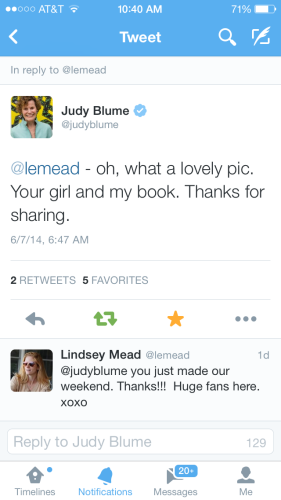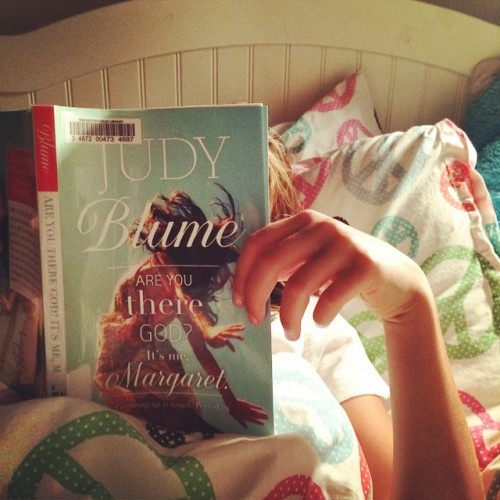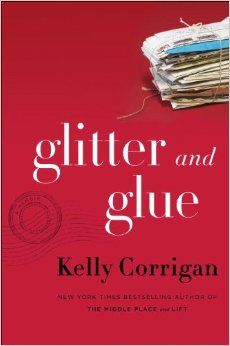
Annie Dillard has been one of my very favorite writers for a long, long time. A search of this blog’s archives brings up fully 2 pages of posts that reference her. It is frankly inexplicable, then, that I hadn’t read An American Childhood before. Perhaps the reason is that I was waiting for the precisely perfect moment to read it, which was last month in the Galapagos. The universe conspired so that I read this book, which is about a child awakening to the miracle of the world and of how transient it is, about moving into adolescence, about memories that we never forget, right as I watched my own near-adolescent children in open-mouthed wonder at the glorious view in front of them. I can’t count the number of times I breathlessly underlined a passage about the bittersweet awe of childhood and then looked up to marvel at my own children, willing myself to freeze them, and that experience, that moment, perfectly in my memory.
before. Perhaps the reason is that I was waiting for the precisely perfect moment to read it, which was last month in the Galapagos. The universe conspired so that I read this book, which is about a child awakening to the miracle of the world and of how transient it is, about moving into adolescence, about memories that we never forget, right as I watched my own near-adolescent children in open-mouthed wonder at the glorious view in front of them. I can’t count the number of times I breathlessly underlined a passage about the bittersweet awe of childhood and then looked up to marvel at my own children, willing myself to freeze them, and that experience, that moment, perfectly in my memory.
An American Childhood, Dillard’s loving, lovely memoir of her childhood in Pittsburgh, is about the central theme of my life, about the black hole around which my every thought, emotion, tear, and word revolves: time’s irrevocable, speedy passage. Pittsburgh is far from the Galapagos, and I am certainly no Annie Dillard, but it speaks to the brilliance and power of her writing that I fell into her story headfirst and related to something on every single page.
Time’s passage is the drumbeat cadence of the book, and fascination with the holiness that exists in the natural world is its soaring descant. I am familiar with how breathtakingly beautifully Dillard evokes the sacred that is inherent in nature, but this was the first time I’d been moved so by her writing about life’s ephemeral transience.
Who could ever tire of this radiant transition, this surfacing to awareness and this deliberate plunging to oblivion – the theater curtain rising and falling? Who could tire of it when the sum of those moments at the edge – the conscious life we so dread losing – is all we have, the gift at the moment of opening it?
An American Childhood is suffused with this radiance, tracing one girl’s “surfacing” from young childhood to a more aware, and more complicated adolescence. At the outset of the book, by recording a “few, floating scenes from early childhood,” Dillard brings a complete world vividly to life: her neighbor skating in the street during an ice storm, her mother addressing a phalanx of nuns, the light of a passing car across a dark wall, her barrel-chested, particular grandmother, Oma.
And then, as Dillard gets older, she describes a change that occurs around the double digit mark. She begins to understand the world and her place in it. This transition is a kind of awakening, and it brings both great appreciation for the world and a keen awareness of how short-lived our time here is. With that awareness, which is intensely familiar to me, comes a fierce, ferocious need to pay attention to the world:
Noticing and remembering everything would trap bright scenes to light and fill the blank and darkening past which was already piling up behind me. The growing size of that blank and ever-darkening past frightened me; it loomed beside me like a hole in the air and battened on scraps of my life I failed to claim. If one day I forgot to notice my life, and be damned grateful for it, the blank cave would suck me up entire.
“What does it feel like to be alive?” Dillard asks midway through An American Childhood. And this felt like a manifesto, a summary of all that she works out in her writing: what it is to be alive in this world. This question, which is also a preoccupation of mine, throbs through everything I’ve ever read by Dillard. Then she answers her own question:
It is time pounding at you, time. Knowing you are alive is watching on every side your generation’s short time falling away as fast as rivers drop through air, and feeling it hit … knowing you are alive is feeling the planet buck under you, rear, kick, and try to throw you; you hang onto the ring….you feel time as a stillness about you, and hear the silent air asking in so thin a voice, Have you noticed yet that you will die? Do you remember, remember, remember?
Dillard was clearly a hyper-aware child and probably one with a melancholy streak too. It is books and nature that bring her the most joy; she talks about scanning the shelves at the local library and about her rock collection with the same passionate nostalgia. As an adult reflecting on her child self, she realizes the fine line she walked, between observing the world and living in it: “How much noticing could I permit myself without driving myself round the bend? Too much noticing and I was too self-conscious to live … too little noticing, though – I would risk much to avoid this – and I would miss the whole show.”
This tension is one I grapple with all the time The border between watching my life and experiencing it is both porous and shifting. I need to do one to do the other, that much is clear to me, but the balance between them that feels right changes daily, if not hourly.
An American Childhood moves forward through Dillard’s adolescence, and we see the entrance of boys, and dances, and the beginning of a new kind of drama. She talks about deeply loving two men, and she loses grandparents. She shows us the way that “loss grew as you did, without your consent,” and as the child author grows into a young woman we see her increasing familiarity with the two sides of this world, both beauty and pain. Indeed, she notes, “time itself bent you and cracked you on its wheel.”
I closed An American Childhood with an ache in my chest, that sensation of having read something so true it hurts. I looked over at the glow of the Galapagos sunset on the faces of my children and felt the fascination and sorrow of this life running together in my veins. I cannot recommend highly enough Dillard’s love letter to childhood, to reading, to nature, to this world in all of its myriad, multifaceted beauty. In the last pages she describes a feeling which sums up what reading An American Childhood is like: “It is the dizzying overreal sensation of noticing that you are here. You feel life wipe your face like a brush.”
In the Galapagos, life wiped my face. Reading An American Childhood, it did too. It is my belief that in those dizzying, overreal sensation, we are truly living.





